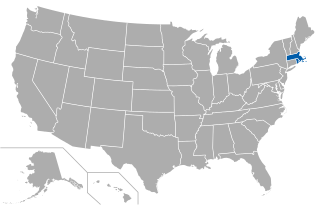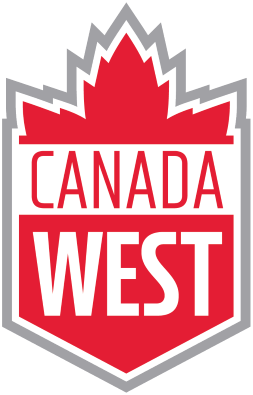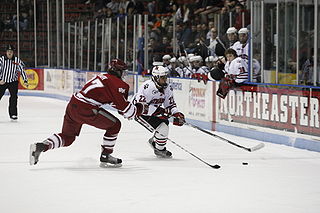Related Research Articles

College Hockey America (CHA) was a college ice hockey conference in the United States. It participated in the NCAA's Division I as a hockey-only conference. The conference's final membership featured six women's teams, with three in Pennsylvania; two in New York, and one in Missouri.

The U Sports Men's Ice Hockey Championship, is a Canadian university ice hockey tournament conducted by U Sports, and determines the men's national champion. The tournament involves the champions from each of Canada's four regional sports conferences. The David Johnston University Cup is awarded to the winners.

NCAA Division I (D-I) is the highest level of intercollegiate athletics sanctioned by the National Collegiate Athletic Association (NCAA) in the United States, which accepts players globally. D-I schools include the major collegiate athletic powers, with large budgets, more elaborate facilities and more athletic scholarships than Divisions II and III as well as many smaller schools committed to the highest level of intercollegiate competition.

The Brandon Bobcats are the athletic teams that represent Brandon University in Brandon, Manitoba, Canada. Currently, there are six Bobcat teams competing in U Sports as members of the Canada West Universities Athletic Association while the Bobcat soccer teams participate in the Manitoba Colleges Athletic Conference.
The American Collegiate Hockey Association (ACHA) is a college ice hockey association. The ACHA's purpose is to be an organization of collegiate affiliated programs, which provides structure, regulates operations, and promotes quality in collegiate ice hockey. The ACHA currently has three men's and two women's divisions and includes approximately 450 teams from across the United States and Canada. Most ACHA teams offer few athletic scholarships and typically receive far less university funding. The ACHA offers an opportunity for college hockey programs that struggle with large budgets and Title IX issues, as an alternative to the National Collegiate Athletic Association (NCAA) financial structure.

The ECAC Northeast was an intercollegiate athletic conference affiliated with the NCAA's Division III as a hockey-only conference. For many years it was one of the three men's hockey conferences that operated under the umbrella of the Eastern College Athletic Conference; the others were the ECAC East, and the ECAC West. Member institutions were located in the New England region of the United States, in the states of Massachusetts and Rhode Island.

Canada West is a regional membership association for universities in Western Canada which assists in co-ordinating competition between their university level athletic programs and providing contact information, schedules, results, and releases about those programs and events to the public and the media. This is similar to what would be called a college athletic conference in the United States. Canada West is one of four such bodies that are members of the country's governing body for university athletics, U Sports. The other three regional associations coordinating university-level sports in Canada are Ontario University Athletics (OUA), Atlantic University Sport (AUS), and the Réseau du sport étudiant du Québec (RSEQ).

College ice hockey is played principally in the United States and Canada, though leagues exist outside North America.

The NJIT Highlanders, formerly the New Jersey Tech Highlanders, are the varsity sport members of the Division I NCAA-affiliated sports teams of New Jersey Institute of Technology (NJIT). There are ten men's teams, seven women's teams, and three club teams along with a variety of intramural teams. The school's primary conference is the America East Conference. In November 2017 NJIT opened the Wellness and Events Center (WEC) which incorporates upgraded facilities for most Division 1 sports including a 3,500-seat arena for basketball and volleyball.

The Sioux Falls Cougars are the athletic teams that represent the University of Sioux Falls, located in Sioux Falls, South Dakota, in intercollegiate sports as a member of the NCAA Division II ranks, primarily competing the Northern Sun Intercollegiate Conference (NSIC) since the 2012–13 academic year. Prior to joining the NCAA, the Cougars previously competed in the Great Plains Athletic Conference (GPAC) of the National Association of Intercollegiate Athletics (NAIA) from 2000–01 to 2010–11; and in the defunct South Dakota Intercollegiate Conference (SDIC) from 1977–78 to 1999–2000.

The annual NCAA Division I Men's Ice Hockey Tournament is a college ice hockey tournament held in the United States by the National Collegiate Athletic Association (NCAA) to determine the top men's team in Division I. Like other Division I championships, it is the highest level of NCAA men's hockey competition. This tournament is somewhat unique among NCAA sports as many schools which otherwise compete in Division II or Division III compete in Division I for hockey.

The United Collegiate Hockey Conference (UCHC) is a college athletic conference which operates in Maryland, New York, and Pennsylvania in the eastern United States. It participates in NCAA Division III as a hockey-only conference.

U Sports women's volleyball is the highest level of amateur play of indoor volleyball in Canada and operates under the auspices of U Sports. 43 teams from Canadian universities are divided into four athletic conferences, drawing from the four regional associations of U Sports: Canada West Universities Athletic Association (CW), Ontario University Athletics (OUA), Réseau du sport étudiant du Québec (RSEQ), and Atlantic University Sport (AUS). Following intra-conference playoffs, eight teams are selected to play in a national tournament to compete for the U Sports women's volleyball championship.

U Sports men's volleyball is the highest level of amateur play of men's indoor volleyball in Canada and operates under the auspices of U Sports. Thirty-one teams from Canadian universities are divided into three athletic conferences, drawing from the three of the four regional associations of U Sports: Canada West Universities Athletic Association (CW), Ontario University Athletics (OUA), and Réseau du sport étudiant du Québec (RSEQ). The Atlantic University Sport (AUS) formerly featured men's volleyball as a U Sports championship sport, but it was removed following the 2017–18 season. The 31 participating teams compete in a regular season and following intra-conference playoffs, eight teams are selected to play in a national tournament to compete for the U Sports men's volleyball championship.
The Quebec–Ontario Athletic Association ice hockey tournament was an annual conference championship held between member teams.
The Ontario Intercollegiate Athletic Association ice hockey tournament was an annual conference championship held between member teams.
The Western Canadian Intercollegiate Athletic Union ice hockey tournament was an annual conference championship held between member teams.
The Western Canadian Intercollegiate Athletic Association men's ice hockey tournament was an annual conference championship held between member teams.
The Canada West men's ice hockey tournament is an annual conference championship held between member teams. The tournament champion received an automatic bid to participate in the University Cup tournament.
References
Canada West Men's Hockey History
- ↑ "History of Canada West". Canada West. Retrieved October 10, 2024.
- ↑ "Great Plains Athletic Conference Women". From Naismith to Nash. Retrieved October 10, 2024.
